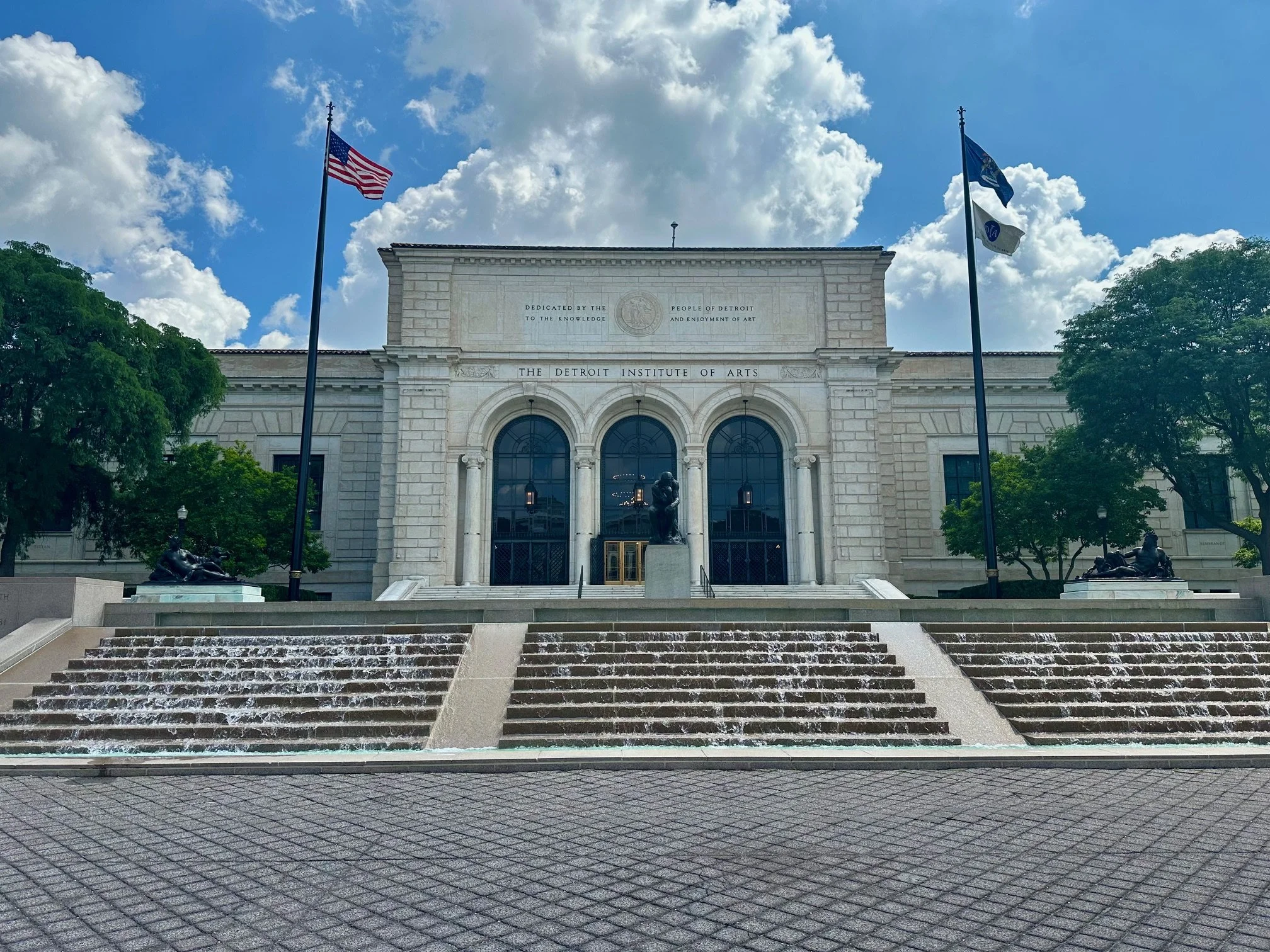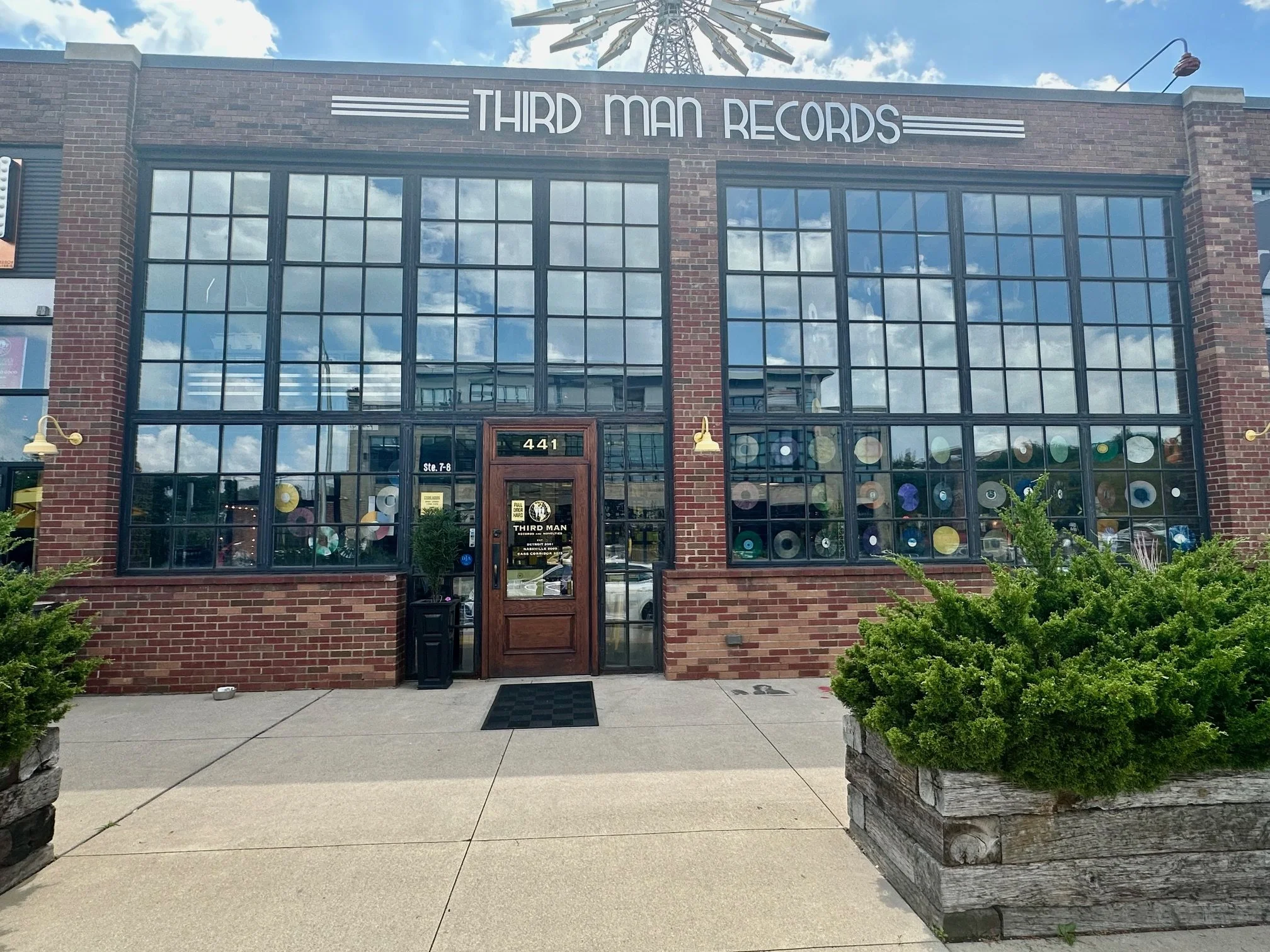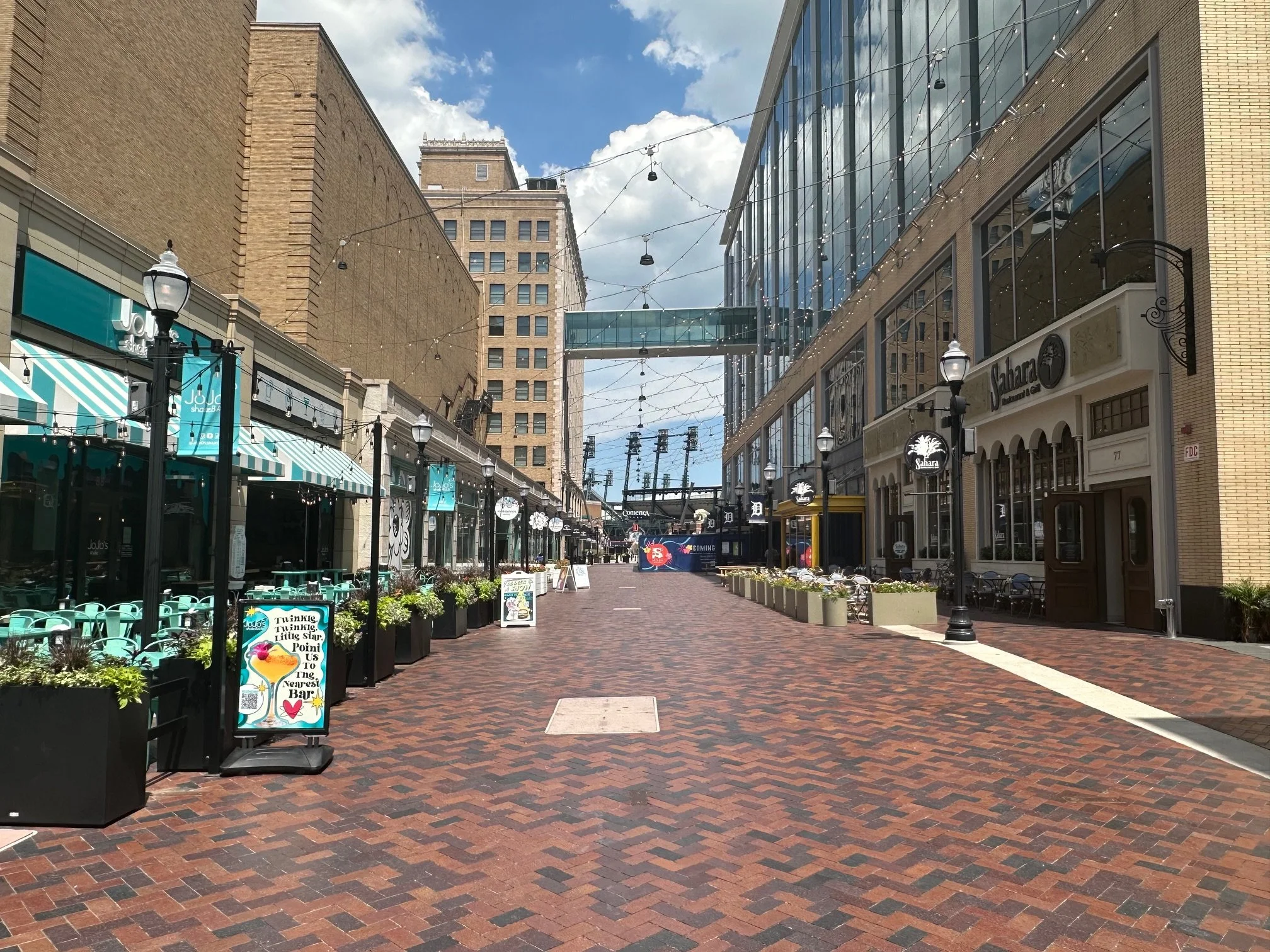Global Citizen NOW: Detroit, and the Impromptu Visit
Crafted by Gabe Bailer, PP, AICP
Last week, I had the opportunity to attend the Global Citizen NOW conference in Detroit—a dynamic gathering of leaders from a wide range of industries focused on sharing insights, actions, and stories to advance inclusive, sustainable cities. As a practicing urban planner in New Jersey, the conference aligned perfectly with my professional interests. When the chance arose, I didn’t hesitate to book a round-trip ticket from New Jersey to Detroit to learn, engage, and connect.
Nearly 25 years ago, I passed briefly through Detroit to catch a Tigers game at Comerica Park, but I didn’t have the opportunity to experience the city beyond the stadium. I never had the opportunity to walk its streets, take in its urban fabric, or observe the landscape and historic architecture that shape its built environment. This time, my itinerary was more intentional: attend the conference, then set out to explore the city firsthand.
With the morning sun rising, I set out for the Global Citizen NOW conference, just a five-minute walk from my hotel. The event was held at Hudson’s Detroit—a striking symbol of downtown reinvestment and redevelopment. This mixed-use project, currently under construction, is led by Bedrock, a prominent real estate firm and one of the driving forces behind bringing the Global Citizen NOW conference to the city.
The development stands on the historic site of the former J.L. Hudson’s department store, which closed its doors in 1986 and remained vacant until its demolition in 1998. Construction on the new Hudson’s Detroit began in 2017, and while the project is still underway, the mezzanine-level event space served as the venue for the conference. It was a fitting location to discuss the future of inclusive, sustainable cities—on ground where Detroit’s commercial legacy is being reimagined.
The mezzanine was lined with exhibits showcasing how Detroit is being reimagined through the perspectives of architects, planners, scientists, and other urbanists. From transforming underutilized downtown parking lots into cultural hubs, to developing a luminous trail along Detroit’s urban walkways, each display highlighted creative strategies for shaping a more vibrant and connected city. It was inspiring to see how thoughtful design, small-scale interventions, and human-centered planning can build a healthier, more resilient urban environment.
The first session, titled “Future Cities: Innovative Infrastructure and Thriving Communities,” brought together a diverse panel of speakers, including Kofi Bonner, CEO of Bedrock; Margaret Anadu of The Vistria Group; Marvin Rees, former Mayor of Bristol, U.K.; and Brian Donlan of Cisco Systems. The discussion centered on how collaboration across sectors—real estate, government, technology, and finance—can foster more inclusive, equitable, and connected cities. Themes of stakeholder engagement, balanced development, and coalition-building echoed throughout the conversation, reinforcing the idea that progress requires contributions from all sectors and individuals, regardless of scale or background.
The following session explored the vital role of STEM (science, technology, engineering, and mathematics) education in building diverse and equitable communities, while the next highlighted how youth empowerment through sports can foster mentorship, health, and long-term community impact. Together, these sessions underscored how multidisciplinary efforts can shape stronger, more resilient urban futures.
With the morning sessions complete, I took some time to network on the mezzanine level with fellow urbanists before shifting gears—trading my conference mindset for my walking shoes and explorer’s hat. I had seven hours to take in Detroit before my return to New Jersey, and the city's streets and sights were calling.
My first stop was the Guardian Building in downtown Detroit—a 40-story Art Deco masterpiece that stands as a symbol of the city’s architectural legacy. I paused to admire its bold exterior before stepping inside to experience the soaring vaulted banking lobby, adorned with vibrant geometric tilework and intricate design details.
Inspired by the grandeur of the Guardian, I made my way to another architectural gem: the Detroit Institute of Arts. There, I wandered through its vast galleries, eventually arriving at the iconic Detroit Industry murals by Diego Rivera—a breathtaking depiction of the city’s automotive might and labor history, captured in monumental scale and detail.
Taking a recommendation from a fellow urbanist at Daily Detroit, I crossed the street to the Detroit Historical Museum. Inside, I immersed myself in the city’s layered history—from its colonial roots to its rise as a manufacturing powerhouse, the sounds of Motown, the periods of decline and disinvestment, and the ongoing story of revitalization. It was an engaging, hands-on experience that offered a deeper understanding of Detroit’s urban evolution.
Next, I put my walking shoes to work and made my way through the campus of Wayne State University, heading toward Detroit’s vibrant Midtown neighborhood. My destination? Third Man Records—the record store founded by Jack White of The White Stripes. Inside, the space buzzed with energy: a retail shop lined with vinyl, a small performance stage, and most impressively, a glass-walled vinyl pressing plant in the rear, where you can watch records being made in real time.
Located along a lively stretch of Canfield Street, Third Man Records is surrounded by an eclectic mix of shops and eateries. I browsed a few local stores and picked up a uniquely designed t-shirt from City Bird, featuring illustrations of Detroit’s architectural landmarks.
By then, it was time for lunch—and what better way to enjoy it than with a craft beer in hand? I headed to Motor City Brewing Works, just down the street, where I relaxed with a couple of IPAs and a perfectly crisp pizza. A well-earned break before continuing my urban adventure.
Even though I was already full, I couldn’t leave Detroit without trying its iconic Coney dogs—classic hot dogs topped with chili, raw onions, and mustard—from the city’s two legendary institutions: American Coney Island and Lafayette Coney Island, famously located side by side downtown. But first, I set off again with no set destination, simply heading south toward the heart of the city.
As I walked along Cass Avenue, I passed several repurposed warehouses and factories that have been transformed into new residential buildings and restaurants, within the Midtown neighborhood. But as I continued closer to downtown, the streetscape began to shift. The vibrant activity gave way to vacant buildings, empty parking lots, and underutilized lots—evidence of a transitional zone between Midtown and Downtown. The potential for reinvestment was clear, but the area hasn’t fully turned the corner just yet.
Approaching downtown, I spotted what looked like a promising bar—a perfect spot for a break and a couple of IPAs—but when I turned the corner, I found it was closed. Fortunately, that detour led me to West Columbia Street, a pedestrian-only corridor lined with restaurants and bars, framed by renovated office buildings and the striking new Little Caesars headquarters. I stopped into Union for a couple of beers and to work up my appetite again.
With my appetite revived, it was time for the long-anticipated Coney Dog Challenge. First up: Lafayette Coney Island. Stepping inside felt like a step back in time—classic spinning counter stools, a no-frills interior, and an old-school diner vibe that hasn’t changed in decades. I sat at the counter and ordered what everyone comes for: “One Coney, please.” The counterman asked, “Everything on it?” “Absolutely,” I replied. Moments later, out came the signature dog, topped with chili, raw onions, and mustard. One bite in, and I knew I was experiencing a Detroit institution.
Next, I headed just a few feet over to American Coney Island. This space had clearly seen some recent updates—brighter, with more seating and a modern touch, but still full of character. I grabbed a seat, placed the same order—“One Coney with everything”—and soon after, received another Detroit-style hot dog, dressed just the same as the first: chili, mustard, and onions.
Now came the moment of truth. Both used the same pork-and-beef blend hot dog, nestled in similar steamed buns. But the real difference? The chili. Lafayette’s chili had a meatier, denser consistency and a richer flavor that stood out. That was the deciding factor. And the winner of my Coney Dog Challenge? Lafayette Coney Island.
From the inspiring sessions at the conference, to exploring Detroit’s streets, museums and local shops, to grabbing a few drinks at neighborhood watering holes, and finally testing my taste buds in the ultimate Coney Dog showdown—it was a whirlwind visit. Though brief, the trip left a lasting impression and gave me a true sense of Detroit’s evolving urban fabric.










